Speaker
Description
Pannonian plain during wheat harvest is considered a source of airborne fungal spores detected also in other parts of Europe. Airborne fungal spores were counted from Hirst-type volumetric samples collected in Novi Sad in July 2019 and simultaneous measurements using Rapid-E (Plait SA) were performed.
Predominant spores detected were Cladosporium, Alternaria, and Coprinus-type and they constituted most of the total spores count (>90%). Alternaria and Cladosporium were more abundant in the morning while most of the Coprinus-type, Ganoderma, and hyaline spores’ peaks were recorded during night hours, therefore, justifying differentiation to “dry” and “wet” spores. Hyaline spores record was positively correlated to humidity and precipitation rather while Alternaria was negatively correlated to humidity.
The automatic bioaerosol measurements were able to quantify total fungal spores after training an AI-based classification model on measurements when the notable quantity of spores was recorded while no pollen was present in the air. For differentiation between fungal spores, a better training dataset is required and detectors need to be more sensitive to record the weak intensity of fungal spores' fluorescence.

